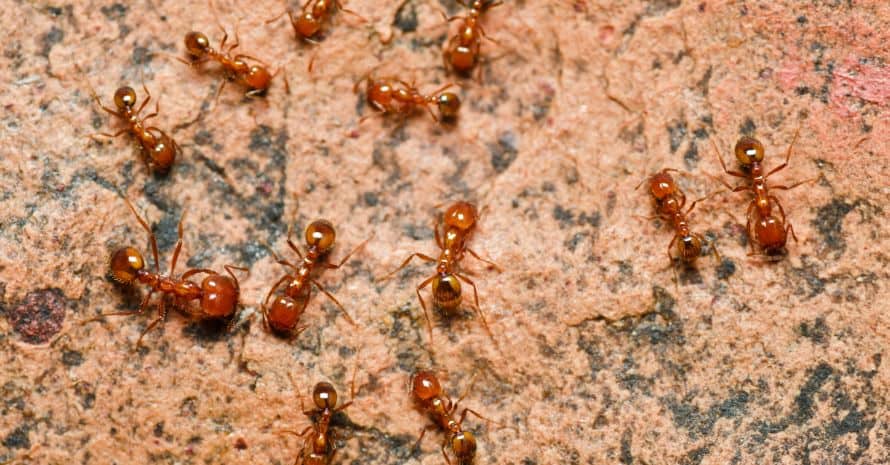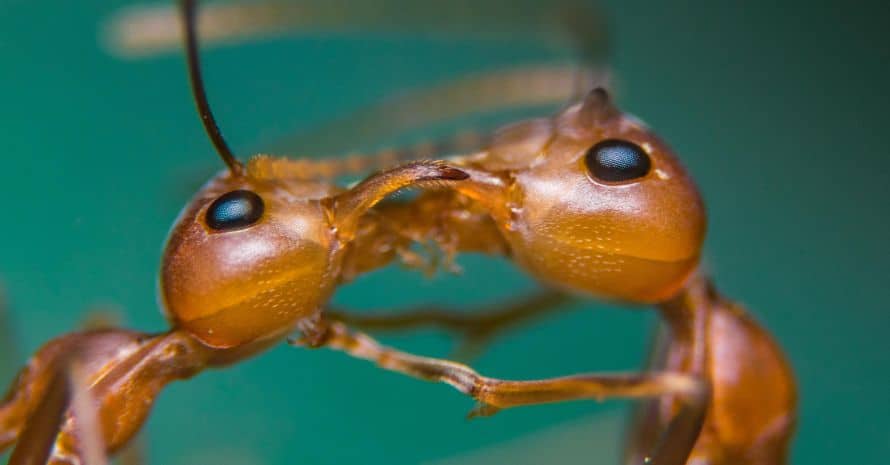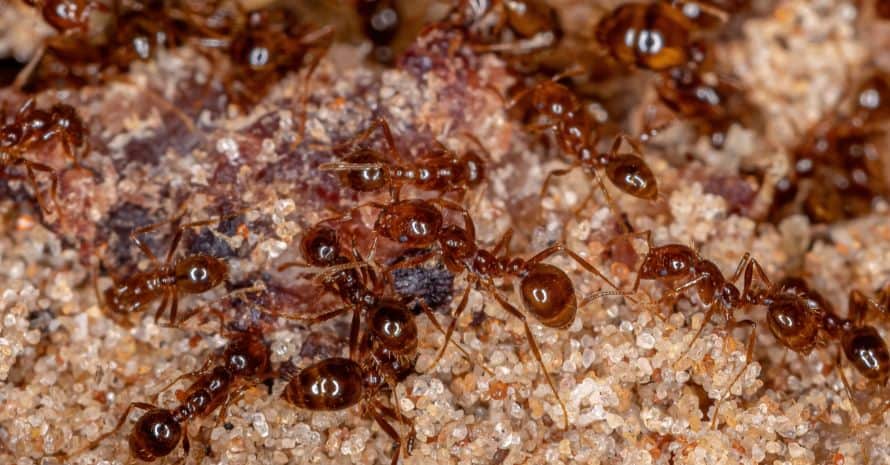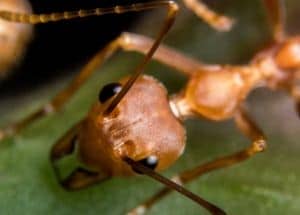Fire ants are a species of ants that are known for their aggressive behavior and painful sting.
They are small, red ants and usually live in colonies. These insects are very aggressive and sting anything that they perceive to be a threat. The sting of a fire ant is extremely painful and can cause severe reactions in some people. Their life cycle can reach up to seven years in favorable conditions.
Fire ants are a major problem in the southern United States where they destroy crops and invade homes. These insects are also a danger to both animals and humans: If they sting you, it might be fatal.
[wpsm_titlebox title=”Types of Fire Ants” style=”main”]
There are more than 280 species of fire ants, but the most common species in the United States are the red imported fire ant and the black imported fire ant. Both species are native to South America and were accidentally brought into the United States through port cities. They are now found in the southern states from Virginia to Texas, as well as in California.
The life cycle of a fire ant is quite fascinating. This ant starts out as an egg. Once it hatches, it becomes a larva. The larva then pupates and eventually emerges as an adult. The adult fire ant is capable of reproducing by laying eggs. Then the cycle starts all over again.
[/wpsm_titlebox]
Habitat of Fire Ants
The fire ant colony is a fascinating and complex structure. The colony is made up of three types of ants: the workers, the soldiers, and the queens.

- The workers are the most numerous and are responsible for foraging, caring for the offspring, and building the nest.
- The soldiers are larger and have powerful mandibles which they use to defend the colony.
- The queens are the largest and most powerful ants in the colony. They are responsible for laying eggs and producing new generations of ants.
The fire ant colony is a highly organized and efficient structure. These insects have a strict division of labor that ensures that the colony runs smoothly. The colony is also very adaptable and can quickly change its behavior in response to changes in the environment.
What Is the Life Cycle of Ants?
When a fire ant colony matures, the winged males and females leave the nest to mate. After mating, the female fire ant returns to the colony to lay her eggs. Once the eggs hatch, the young fire ants go through the four stages of ant metamorphosis: an egg, a larva, a nymph, and an adult.
1. Egg stage
The egg stage is the first phase in a fire ant’s life cycle. Eggs are laid by a queen ant, and worker ants take care of them later.
2. Larvae stage
The larva stage is the second stage in the ant’s life cycle. Fire ant larvae develop from eggs and look like small, white grubs. Worker ants are responsible for taking care of them and feeding larvae with regurgitated food. After around three to four weeks, larvae will pupate.
[su_youtube url=”https://www.youtube.com/watch?v=TaPFfp52ZrM”]
3. Nymph stage
A fire ant nymph is a small, wingless insect in the immature stage of its development. Nymphs of many species, including ants, lack wings and must molt several times before they become adults. The nymph stage is often the longest one in the insect’s life cycle. They are born white, but their exoskeletons harden and darken as they mature. Fire ant nymphs are unable to mate or reproduce. When fully developed, fire ant nymphs are about the same size as adult worker ants, but they lack the mature reddish-brown coloration and wings.
4. Adult stage
The adult stage is the fourth and final point in the ant’s life cycle. Adults are fully developed, and it becomes possible for them to mate. They leave the nest to find food and water. After around two to three weeks, they die.
These insects are reddish-brown to black in color and are about 1/4-inch long. They have a stinger which they use to defend themselves and their colony. Workers are sterile females and build the nests, care for the offspring, and forage for food. Males have wings, and their only role is to mate with the queen. The queen is the only fertile female, and it can lay up to 1,500 eggs per day.

Features of Fire Ants
The fire ant’s body is divided into three parts: the head, the thorax, and the abdomen. The head is round and has two large eyes. The thorax is where the legs and wings are attached, and the abdomen is long and slender.
The fire ant’s bite is painful because of the venom that they inject into the victim. This venom is a mixture of proteins and alkaloids. These insects also sting if they feel threatened. The sting of a fire ant can be very painful and cause swelling, itching, and redness.
Diet
Fire ants are omnivorous, meaning they feed on both plants and animals. However, they prefer to eat insects and other small invertebrates. Fire ants also feed on the honeydew produced by aphids and other pests. This species is attracted to food that is high in sugar.
Behavior
Fire ants are highly aggressive and readily attack other insects, animals, and even humans. They sting their victim with their venomous sting, which can cause a painful burning sensation. Fire ants also bite the victim if they feel threatened.
Control
Fire ants can be difficult to control due to their aggressive behavior and high reproductive rate. Baits and insecticides are typically used to control fire ants. However, these methods can be dangerous to non-target species, so you have to use them with caution.

Fire Ant Predators
Fortunately, there are a number of predators that help keep fire ant populations in check. These include other ants, spiders, wasps, lizards, and birds.
- One of the most effective fire ant predators is a phorid fly. These flies lay their eggs in the heads of fire ants. The fly larva then feeds on the ant’s brain, causing it to become disoriented and eventually die.
- Another fire ant predator I’d like to mention is the red imported fire ant soldier. These insects can kill fire ant queens and workers. They do it by using their large mandibles to crush the heads of their prey.
While there are many predators, the best way to control these pests is to prevent them from getting established in the first place. You can do it by eliminating potential nesting sites and using baits and traps to kill ants before they become a problem.

FAQ About Fire Ant Life Cycle
In this section, I will answer some of the most common questions people ask about fire ants’ peculiarities and behavior. I hope you will clarify everything you want to know about these insects after reading my brief answers.
How long is the fire ants’ lifespan?
The lifespan of a fire ant colony varies depending on the species and the environment. Some colonies can last for years, while others might only live for a few months. The queen fire ant is the longest-lived member of the colony that can live for up to seven years. The worker ants survive for a much shorter period, only a few months. The males of the species live even less, typically not more than a few weeks.
How quickly do fire ants spread?
When fire ants first invade an area, they are often confined to a small territory. However, once they become established, they can spread rapidly. A single fire ant colony can produce up to 250,000 offspring per year. If you don’t take any measures on fighting it on time, they can briefly cover large areas.
Which factors impact an ant’s lifespan?
One of the biggest factors that impact their lifespan is their diet. When insects have a poor diet, they do not live as long as they consume insufficient amounts of food. Another factor is the environment. If a fire ant lives in unfavorable conditions, it will live less than an ant thriving in a more hospitable environment. Finally, the ant lifespan is also affected by the species. Some types of ants live longer than others.
No Fire Ants, No Painful Bites
Despite a short fire ant lifespan, these insects are a major problem in many parts of the world. These ants are invasive and can cause serious damage to crops and other plants. They can also be a nuisance to people, as their sting can be very painful.
If you live in an area that is infested with fire ants, you should take certain measures to control them. There are a number of products on the market that can help you kill these insects. You can also contact your local pest control company for assistance. Do you have fire ants on your territory? Have you taken any preventive measures against them, or investigated their presence when it was too late? Please, share your story with me and other readers in the comments.

